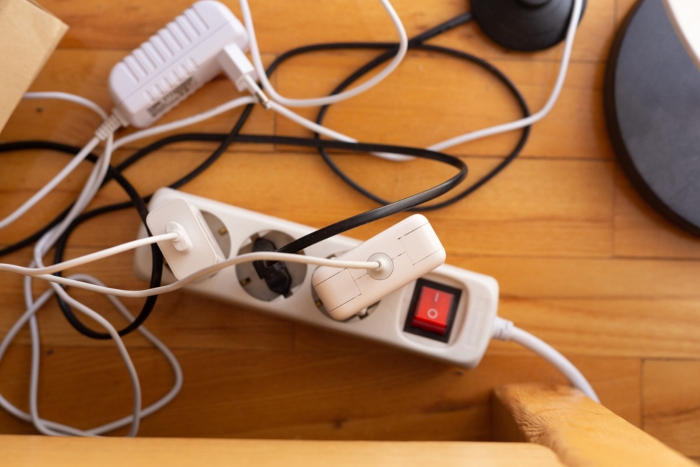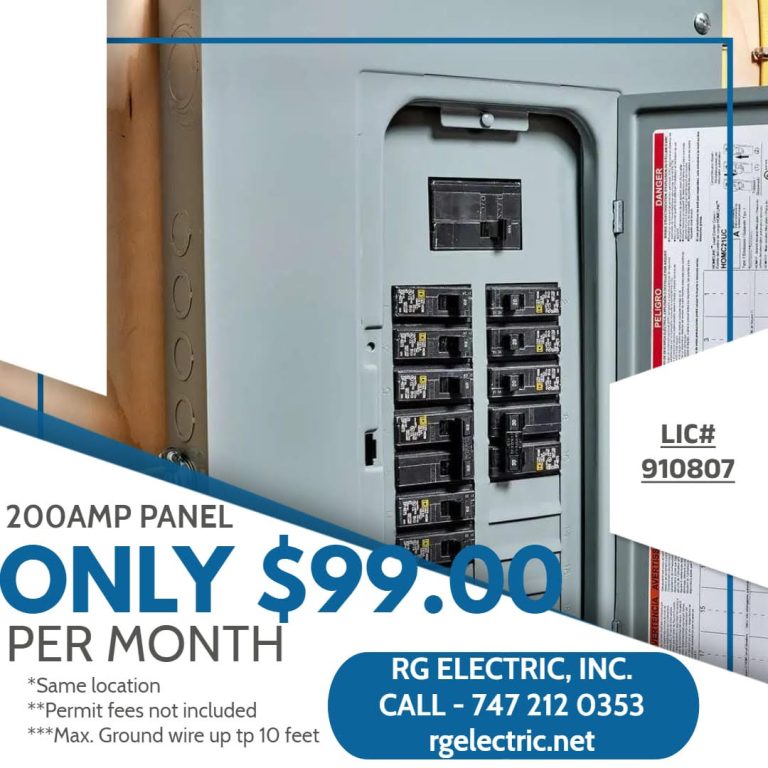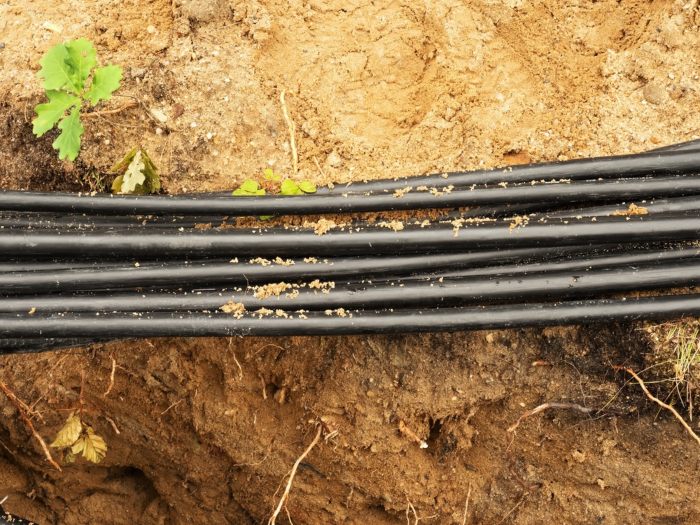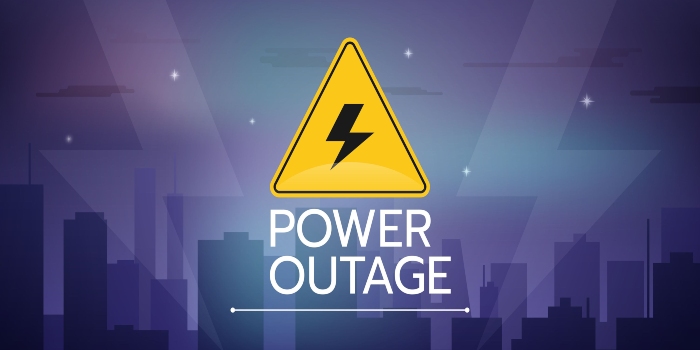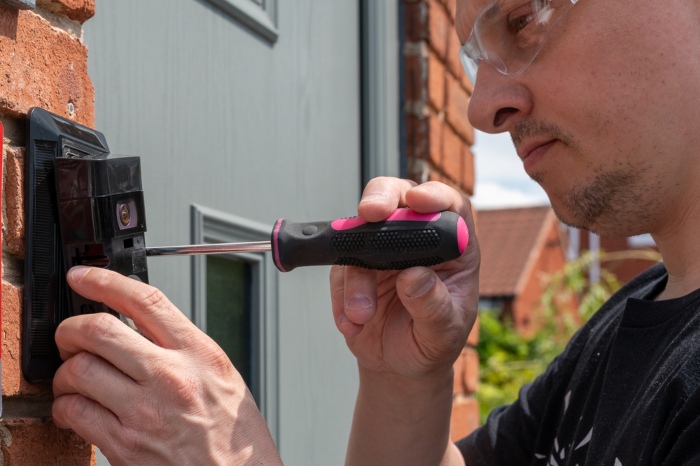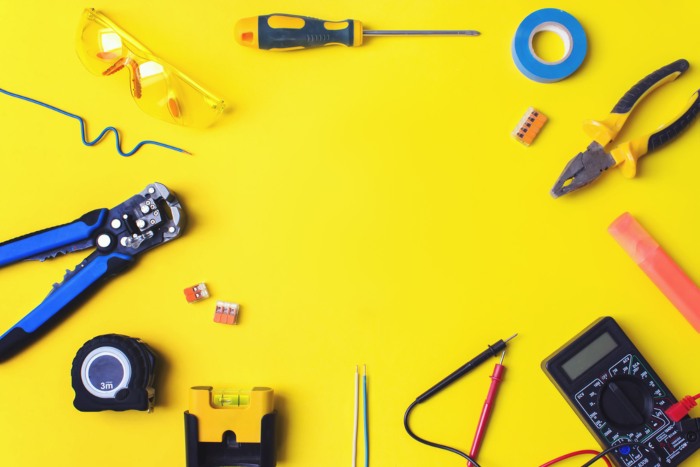
Electricity for Dummies – Basic Electrical Knowledge
When it comes to our home, electricity is everything. As a homeowner, you need to have basic electrical knowledge to stay safe.
In this guide, “Electricity for Dummies,” RG Electric will explain what electricity is, how it enters your home and gets distributed through your house, and define the main components of the residential electrical system.
What is Electricity?
The word “electricity” emerged more than 2000 years ago in Ancient Greece. People noted an amber gem started to pull tiny items to itself when rubbed against wool. Amber in Greek was called “electron,” thus, giving birth to the name.
However, ancient Greeks failed in experiments with static electricity. This became possible only decades later. Scientists discovered that surrounding items are made up of atoms that carry protons and electrons. These two elements have electric charges: electrons have a negative charge, and protons – positive. When drawn to each other, they interact depending on the number of protons, and electrons atoms produce.
Protons are found in the nucleus of all atoms, and electrons move around them. Atoms with a number of protons equal to the number of electrons have a zero charge. For example, an untouched amber gem has a zero charge but when rubbed against the atoms of wool, the wool electrons will be added to the amber electrons, and their “abundance” will make the charge negative. Such a gem starts to pull small particles with a zero and positive charge, repelling particles with a negative charge.
Electricity – An Organized Row of Electrons
But how does electricity live in the socket if everything is so complicated?
Almost all atoms can lose and acquire electrons. Some atoms have too many electrons and others lack them. So when moved by electric power electrons, they will go in the direction to compensate for the shortage. This flow is called the electrical current.
Electrical current can be compared to a river, which spills into many branches, powering appliances. Yet, these should come from the source before directing this current of negatively charged particles.
The best minds of the past millennium fought over this question. The first scientist to make a breakthrough was an Italian physicist and chemist Alessandro Volta who invented the first battery in 1800, dubbed the “voltaic pipe.” Since that, the current charge has been measured in volts.
Where Do We Get Electricity From?
The sources of electricity are:
- Thermal power plants
- Nuclear power energy
- Hydropower plants
- Wind and solar power
A Bit of History – Electricity for Dummies
The first power plant Pearl Street Station, available to the public, was built in New York in 1882. The author of the initiative was the famous Thomas Edison.
However, the “grandmother” of all plants could only light up 10,000 bulbs, while modern power plants produce a thousand times more, supplying electricity to cities with a population of 100,000.
How Does Electricity End Up In Our Homes?
Generated current in the power plants passes through cables to the distribution substation for measuring and conversion. Then, transformers increase the charge up to 10000 volts. Due to this charge, the current can reach remote distances with a tremendous speed of 3000 km in a second.
Furthermore, the current gets to another substation where transformers reduce the voltage – up to 220 volts. Then the electricity flows to the distribution network of a city and, from there – to the electric panel or breaker box of your house or apartment.
How Does Current Make Appliances Work?
How does electrical current make devices work? To illustrate, let’s take a bulb and get back to the particles.
When electrons with light speed pass through the wires, they encounter atoms in the wires. Consequently, the atoms heat up, and the bulb wires rise in temperature to 1000oF. Objects this hot generate visible light.
Modern devices and electronics, such as mobile phones, TVs, and microwave ovens, involve complex chips, but the idea is the same – the conductor atoms get hot due to the rapid flow of the particles and produce electrical energy, thus, making our devices work.
Home Electrical Systems – Electricity for Dummies
Working with home electrical systems can be intimidating.
Household wiring can be dangerous depending on the type. Standard voltage wiring that powers electrical outlets, lighting, and appliances must be handled carefully to avoid electrical shock.
But if you follow the experts’ instructions and turn off the power to circuits and devices, you will be able to complete minor (only minor!) electrical works safely. Low voltage wiring for cable television, speakers and security systems is very safe.
This section offers information on the home electricity for dummies.
Electrical panel
Your breaker box is the source of electricity. From there, the electricity is distributed throughout your home to the outlets, switches, appliances, and other devices. It is also known as an electrical panel or service panel. Older homes are likely to have fuse boxes that serve the same function. It is often found in a closet, basement, garage, laundry room, or even outside.
Main circuit breaker
The main circuit breaker found in the service panel is responsible for the power flow to the branch circuit breakers. You can flip the switch to OFF and shut power to your home.
Branch circuit breakers
Branch circuit breakers control power to a specific room in your home, like outlets and switches in a kitchen or a bathroom. These can be single-pole and double-pole breakers. Single-pole breakers are 120-volt and are used for wall outlets and lights. High-power-consuming devices, such as dryers, washing machines, and EV chargers, are controlled by 240-volt double-pole breakers.
Sub-panels
Some apartments will have a subpanel connected to the main breaker panel. Unlike service panels, these are small in size and contain fewer breakers. They are common for outbuildings or when a backup generator has to be added to the home’s electrical system.
Important: Never approach circuit breakers or electrical panels with wet hands. Always turn off the main breaker and use rubber electrician gloves. Here’s another piece of advice – don’t use steel ladders.
Check out our articles “Ways to Tell Your Circuit Breaker is Bad” and “How to Read Your Circuit Breaker Panel.”
Wiring
Wiring is typically hidden in the walls. It can vary depending on the building codes. Some can be non-metallic, metallic cables, or come in plastic conduits. It’s vital to ensure that the cables you use meet NEC standards. So, talk to a qualified Los Angeles electrician before starting a home improvement that involves wiring. Meanwhile, find out how wires work and how much it costs to rewire a house.
Homes built between 1956 and 1974 may have old aluminum wiring posing a fire hazard and should be repaired or upgraded. This is also true for knob and tube wiring. The team at RG Electric is fully qualified to tackle this safety of your home, so get in touch with us for an inspection of your electrical system.
Other helpful RG resources on wiring for dummies:
Switches
Every room in your house has switches. They turn on lights and other devices like ceiling fans, hair dryers, etc. Here are the different types of switches in the average US home.
- Single-pole switches are used for one outlet and device.
- Three-way switches are designed to control one device from different areas. These are usually installed at the entrances to a room or the end of staircases.
- Dimmers are intended to control the intensity of lights.
- Motion-sensor switches are smart technology detecting moving objects and automatically turning on the lights.
- Smart switches are invented for the home’s Wi-Fi network to control room lighting.
Outlets
Like switches, there are a variety of outlets. Some are designed to carry heavy loads, while typical receptacles would be 15A 125 volts.
- 15A 125-volt outlets – perfect for general usage.
- 20A 125-volt outlets – can handle heavy loads.
- 250-volt outlets – for clothes dryers or EV chargers.
Safety Outlets
- AFCI outlets (Arc Fault Circuit Interrupter) outlets prevent arcing.
- GFCI (Ground Fault Circuit Interrupters) outlets shut off the power when water contacts the power and a sudden power surge occurs. According to NEC, they must be installed in “wet” rooms like bathrooms, kitchens, and outdoor spots.
- Smart outlets are connected to remote controls or apps. They can be programmed to turn on and off lights automatically. Integrating Google Home and others allows for using a voice control
- USB Outlets are very convenient for charging a smartphone and other devices.
Important: If you notice issues with your outlets and switches like visible sparks, warmth on the plastic cover, blackening around the plug, including on the switch or outlet, you should immediately unplug all devices and call an electrical contractor or electrician.
Smoke Detectors
Your home must have smoke detectors to protect your property and family. In California, fire alarms are required in most residential buildings. Only a professional electrician can ensure they are placed in the right locations.
Whole house surge protectors
Surge protectors protect home electronics and appliances from power spikes. If you don’t have one, you should definitely consider installing a modern surge protector to ensure the safety of your gadgets.
Safety Tips – Electricity for Dummies
- Avoid water when working with electricity. Never touch or attempt to repair any electrical equipment or circuits with wet hands.
- Never operate equipment with cracked cords, damaged insulation, or broken plugs.
- If you are working with any outlet in your home, always turn off the main circuit breaker. It is also a good idea to hang a sign on the service panel to prevent turning it on.
- Always use insulated electrician tools while working on a project.
- Also, wear insulated rubber gloves and goggles when working on any branch or main electrical circuit.
- Never attempt to repair live equipment. Make sure it isn’t under the voltage using a tester. When the electrical tester touches a live or hot wire, a light inside the tester will light up, indicating that the electrical current is flowing through the corresponding wire. Before proceeding, check all wires, the outer metal covering of the service panel, and any other hanging wires with an electrical tester.
- Never use a steel ladder. Otherwise, the electrical surge will ground you, and all electrical current will pass through your body. Instead, use a bamboo, wood, or fiberglass ladder.
- Always check all your GFCIs regularly. These devices have become very common in modern homes, especially in damp areas such as bathrooms and kitchens, as they help avoid electric shocks. They are designed to shut down power quickly enough to avoid an overcurrent or short circuit injury.
- When you see a broken wire lying on the ground, don’t approach it at a distance closer than 10 feet; don’t touch anything in contact with the wire. Avoid walking or doing any activity under overhead power lines, especially in windy weather.
Improve Your Electrical System with RG Electric
At RG Electric, we have the know-how to perform electrical repairs and installations. Whether it’s a small project as a replacement of a new wall switch or outlet, or a bigger job like hardwiring a backup generator to your electrical system, or home rewiring, our electricians can inspect your electrical system and improve it. If you live in the LA Metro Area, contact us today to discuss your electrical needs.


 Call (323) 5215131
Call (323) 5215131



